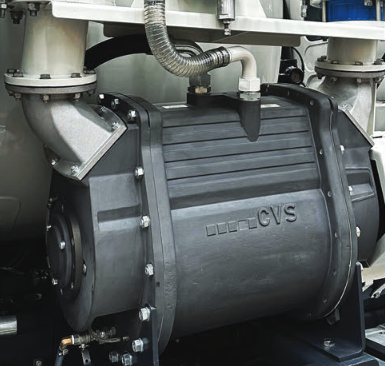Flushing vacuum pumps is a much-misunderstood process which many owner/operators fail to get their heads around.
Let me give you a very brief idea of my experience for way back when.
I fitted a new 753LNHRVO Wallenstein vacuum pump to my Scania vacuum truck and on advice of the guy that designed and made the pumps in Canada, I decided I would flush the pump every week.
I did this every Friday arvy just before beer o clock, for the next 8 years… It only took me 10 minutes tops each time. The vane pump on my truck had a 25mm wear tolerance, and after eight years the vanes had worn only 3mm!
The flush process I decided upon, involved mixing equal parts diesel and vacuum pump oil and pouring 500ml (two and half beer pot glasses) into the flush port of the pump with the pump running at slower than normal operating RPM, say about engine idle so maybe 700-800 rpm. Let the pump drink this cleansing ale down and run for a further 10 minutes at the usual operating speed (between 900-1000rpm) to then warm up and burn the residue out of the system. You will see the smoking reside after 8-10 minutes.
You should notice the vacuum pump becomes quieter during the flushing process.
After the process is completed, I would then refit the flush port plug.
To make life easier I had a 20lt container premixed with flushing liquid and also a 1lt container onboard the truck for those “just in case” moments if your pumps cops a gutful of overflow froth or the like…
Being diluted the viscous diesel/oil mixture gets into the area behind the vanes in the rotor slots and helps to shift any built up oil/contamination sludge which gathers behind the vanes and also beside them as well. It’s the sludge build up that can slow or stop the vanes from sliding freely throughout the rotation of the rotor.
Ideally freely sliding vanes will remain in contact with the inside of the housing for the entire rotation of the pump. Vanes which are stuck will eventually throw out and strike the inside of the housing rather that staying contact with it. It is this striking action which causes something similar to a pothole in the road (thing of a stuck vane like the impact of Dan Andrews on Victorian roads…) on the housing.
Once the potholes start in the housing you guessed it, they’re impossible to stop! Nothing short of honing the bore!
So let’s consider the benefits of the equation;
Low vane wear reduces the need to replace vanes needlessly. At $1110.00 plus gst per set of vane. At that rate of 3mm per every 8 years it will take 60 plus years to get there!
At VTS we have seen some operators replacing vanes every 3-4 months because of totally trashed housings. The more worn the housing the greater the vane wear!
Another issue which can be caused due to increased vane wear is the risk of vane breakage become even greater. If a vane breaks the damage is catastrophic. Think total pump replacement. And that’s close to $8K now.
Not to mention downtime which could be a week or more by the time you buy the
So, the long and short of flushing your pump is not just about preventative maintenance, its also about saving money and helping your vacuum pump to last longer giving you a more reliable and quieter running vacuum truck. Who benefits from that?
VTS sells complete flush kits which make the process even easier now. With the VTS kit flushing is reduced to a couple of minutes each time.
Article by Rod Glue
